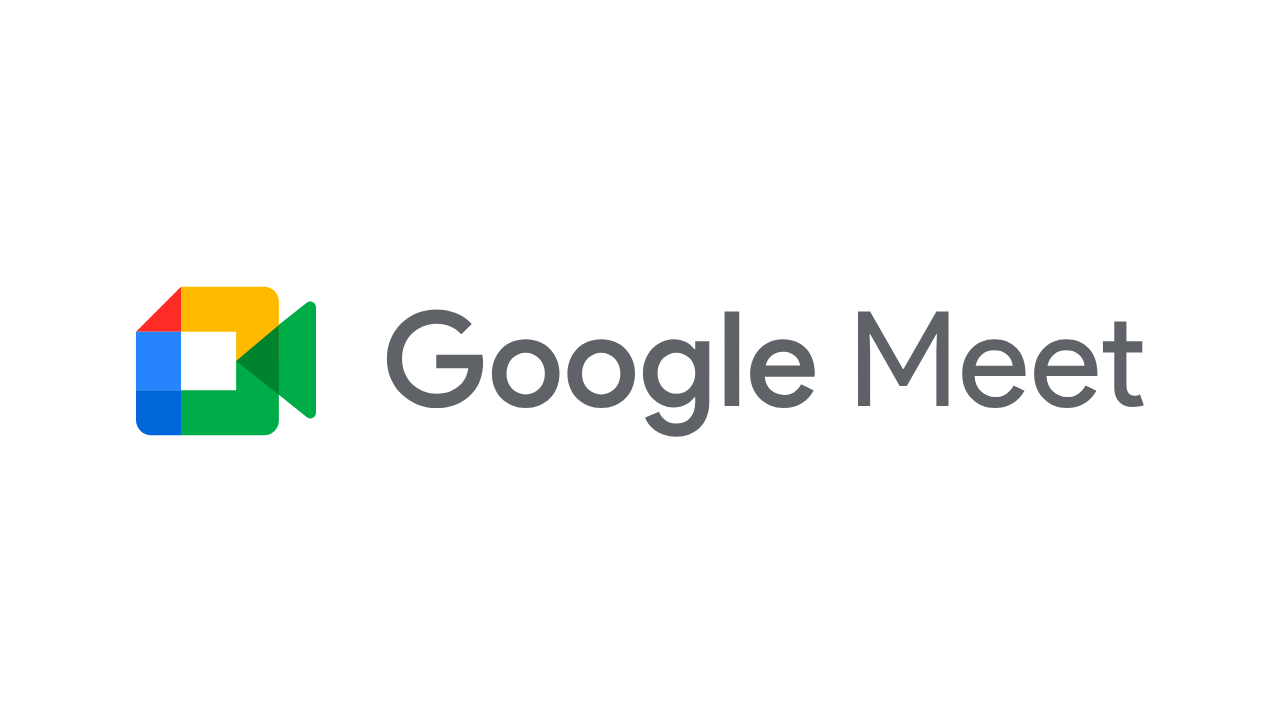-
Pros
- Accessible entirely from a web browser
- State-of-the-art transcription and recording tools
- Real-time translated captions in 69 languages
- High-quality audio and video
- Extensive annotation tools available during screen-sharing
-
Cons
- Requires Google Workspace for Business and Gemini subscriptions for the full experience
- Lacks native whiteboard tools
- No monthly plan
Google Meet Specs
| 24/7 Phone Support | |
| Audio Recordings | |
| Blur Backgrounds | |
| Calendar Integration | |
| Cloud Storage | |
| Free Version Offered | |
| In-App Messaging | |
| In-App Private Chat | |
| Multi-Language Support | |
| Share Desktop | |
| Social Media Integration | |
| Video Recordings | |
| Virtual Backgrounds | |
| Whiteboard Tools |
A superbly usable video conferencing service with an extensive feature set, Google Meet is ideal for businesses that use Google Workspace. Its meeting recording and transcription features are excellent, while its unique annotation tools and Gemini AI-based audio and video enhancements help it stand out. That said, the lack of native whiteboard collaboration features and unavailability of standalone pricing means it falls slightly short of our Editors' Choice winners, Webex by Cisco and Zoom Workplace. Both of those services offer a slightly more focused mix of features for potentially less money.
How Much Does Google Meet Cost?
Anyone with a Google account can use Meet to host video meetings with up to 100 participants for free. Keep in mind that there’s a 60-minute limit for such meetings unless you're on a mobile call or meeting with just one person. Of course, a Google account also gives you access to 15GB of Google Drive cloud storage, the capable Docs editors, and a Gmail address. Note that certain Google One plans unlock some premium Google Meet features.
To get Meet's best features, you need to pay for a Google Workspace for Business plan. A 14-day free trial is available for each of these tiers. However, they require a one-year commitment, which you might find restrictive.
The entry-level Business Starter plan costs $6 per user per month. Each user gets 30GB of pooled storage with this tier. It keeps the number of video participants to 100 but extends the meeting time limit to 24 hours. The Business Standard tier goes for $12 per user per month. It expands pooled storage to 2TB per user and the video participant limit to 150 people. It adds the ability to save recordings to Google Drive, breakout rooms, polling and Q&A features, and a hand-raising function. For $18 per user per month, the Business Plus tier caps you at 5TB of pooled storage per user and 500 video participants. It also unlocks attendance tracking. You must contact Google's sales team for Enterprise pricing. Again, a good chunk of what you pay for here is cloud storage and access to the other apps within the Workspace suite.
Google’s Gemini Business add-on for AI assistance with Meet (and every other app within the Workspace suite) adds at least $20 per user per month with an annual commitment. In testing, I found that Gemini completely justifies its cost, but your experience might differ. If you add this to any of the Workspace for Business Plans, Google Meet becomes somewhat expensive.
For comparison, Zoom Workplace's free plan lets you host video meetings of up to 40 minutes with up to 100 attendees. Its Pro plan, which starts at $15.99 per user per month, unlocks 5GB of cloud storage per user and a maximum meeting length of 30 hours. Webex by Cisco's free tier matches that of Zoom Workplace. Its Meet plan, which starts at $14.50 per user per month, supports 200 participants for calls as long as 24 hours. Both offer monthly plans, native whiteboard features with their free tiers, and advanced AI capabilities with their base paid plans.
Getting Started With Google Meet
I found it very easy to sign up for Google Meet. I didn’t even have to install any new software since it fully runs within a web browser. Mobile apps are available for Android and iOS but not desktop platforms.
The rest of the Google Workspace for Business platform is also simple to implement. Just log into your account and use Google’s quick-start checklists to add team members, share access, set up proper security measures, and more.
I really enjoy the design and navigation of the Google Meet dashboard—it has clear buttons and lots of white space. I prefer Meet’s low-fuss interface over Zoom's more crowded dashboard.
Starting and Running Meetings
All of Meet’s options for starting a meeting—instant start, creating a meeting for later, or scheduling via Google Calendar—work well. I prefer the last option since it makes it easy for everyone to join from the calendar event itself when the time comes.
During my testing, Google Meet's default audio and video settings ensured excellent quality. The Gemini AI add-on automatically filters out non-speech sounds and minimizes feedback. You can turn these features off, but I don't see a reason to do so. Meet defaults to Auto for video resolution, meaning a strong Wi-Fi signal should result in a crisp image. Gemini’s Studio Look tool adjusts your video quality if your lighting is too low or your webcam is of poor quality.
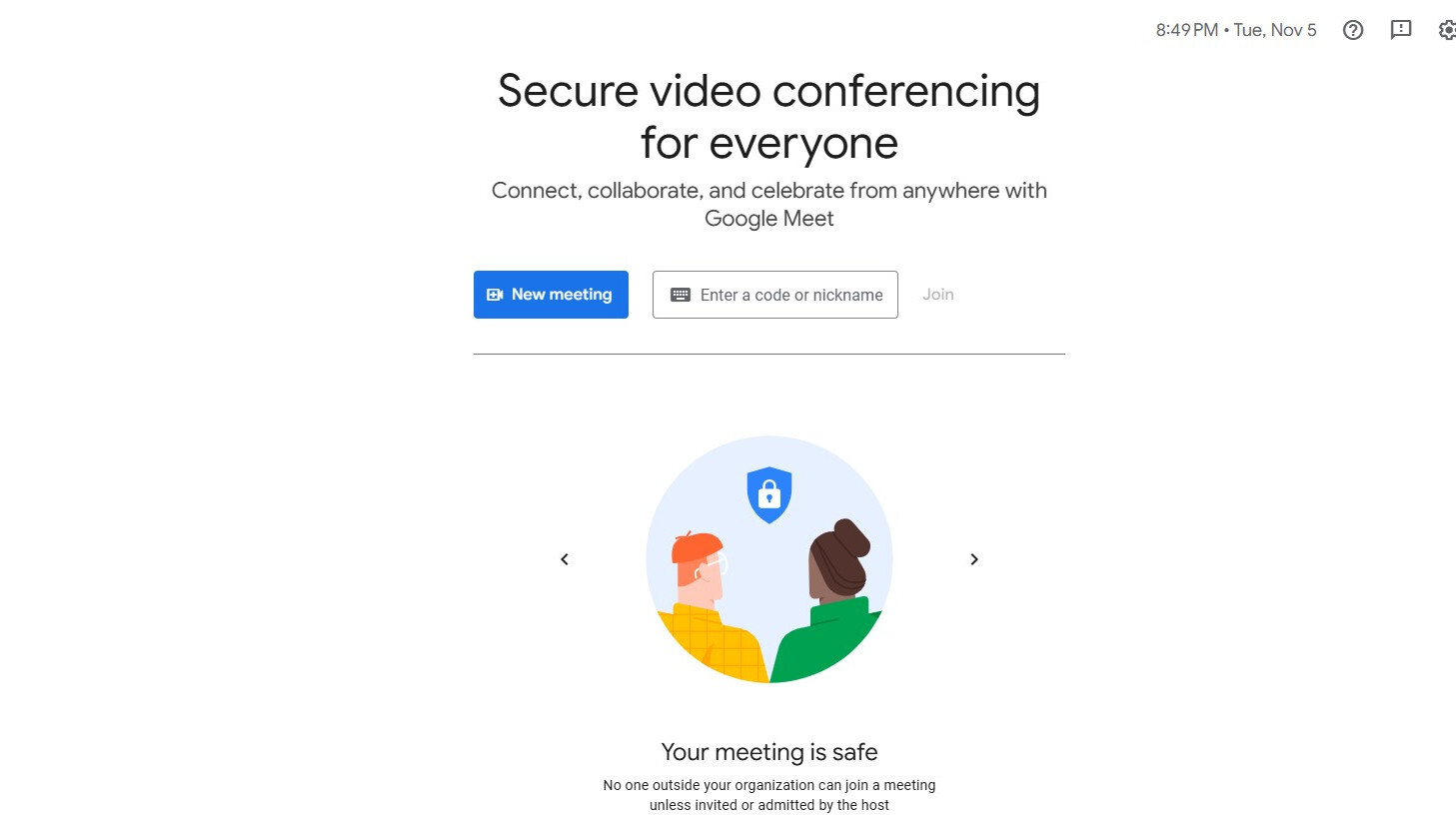 (Credit: Google/PCMag)
(Credit: Google/PCMag)During a meeting, all the basic video conferencing controls, including mute, video, and screen-sharing buttons, appear at the bottom of the screen. Meeting ID and time of day info are at the bottom left. Meet hides some of the most exciting features behind the overflow menu, which is also at the bottom. I appreciate how manageable this layout is.
Click the overflow menu to access layout options, a picture-in-picture view, and visual effects. Meet’s blurring effects worked well despite taking a few seconds to load, and I saw a whole library of other backgrounds and filters ranging from professional (conference room wall) to silly (a birthday cake interpolated over my face). Both cause less image tearing than Zoho Meeting, a more affordable but less capable alternative.
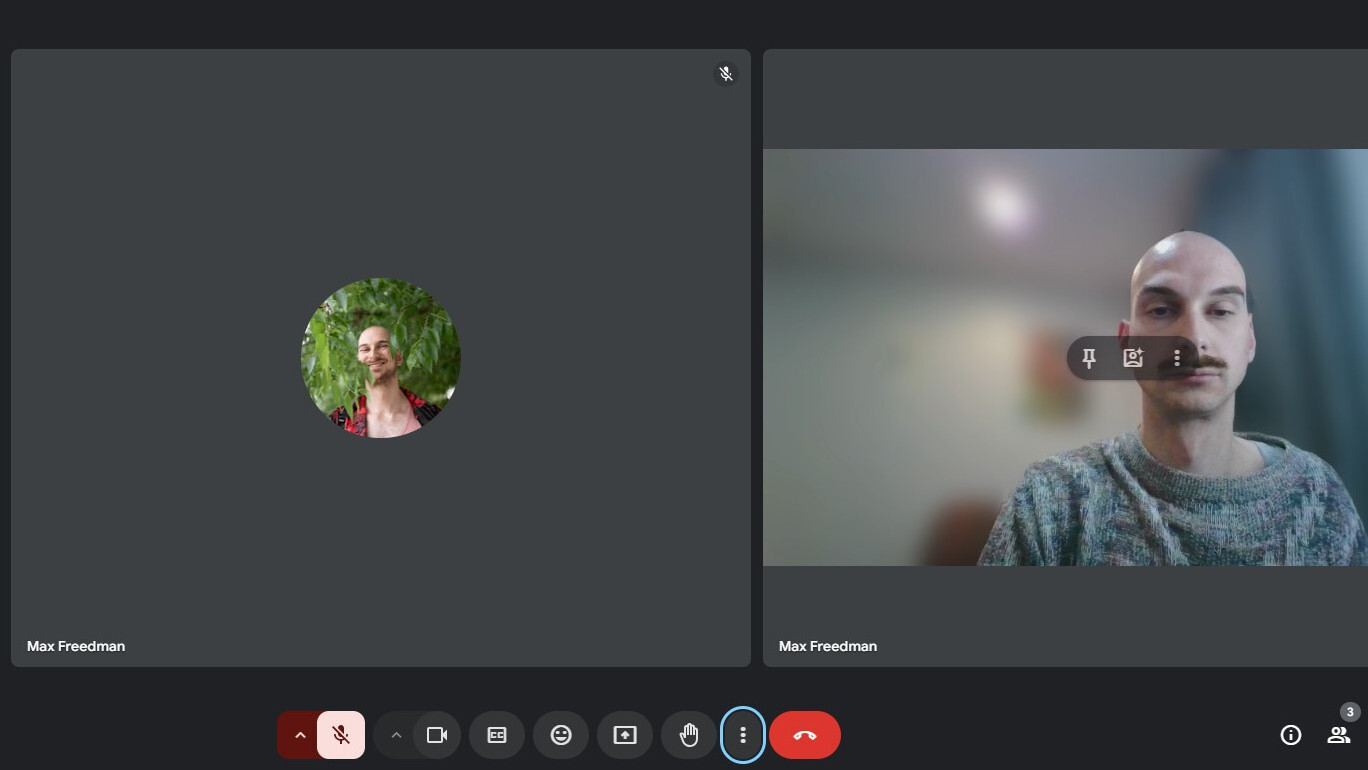
The Gemini add-on can create custom-generated backgrounds, though this tool is still too early in development to be fully useful. It requires you to write a short phrase and choose a background style from a drop-down list. Selecting the “hotography option from the drop-down list resulted in an effective AI-generated background. However, when I picked Film Noir, Gemini told me, “Meet is still learning and can’t help with that. Try something else.” You are better off sticking with the standard blurred background option for now.
Meet offers three layout options in addition to its default view. My favorite is the tiled view, which allows you to see between six and 49 people at once. Other options include a spotlight view that focuses on the current speaker and a sidebar view that presents the speaker alongside some other faces.
As with many other video conferencing platforms, Meet’s pop-out picture-in-picture (PiP) feature lets you keep the video conferencing window in view while you look at other tabs. This capability is available only on a Chrome browser on the web, though Meet cleverly lets you see both yourself and the person speaking in the PiP window.
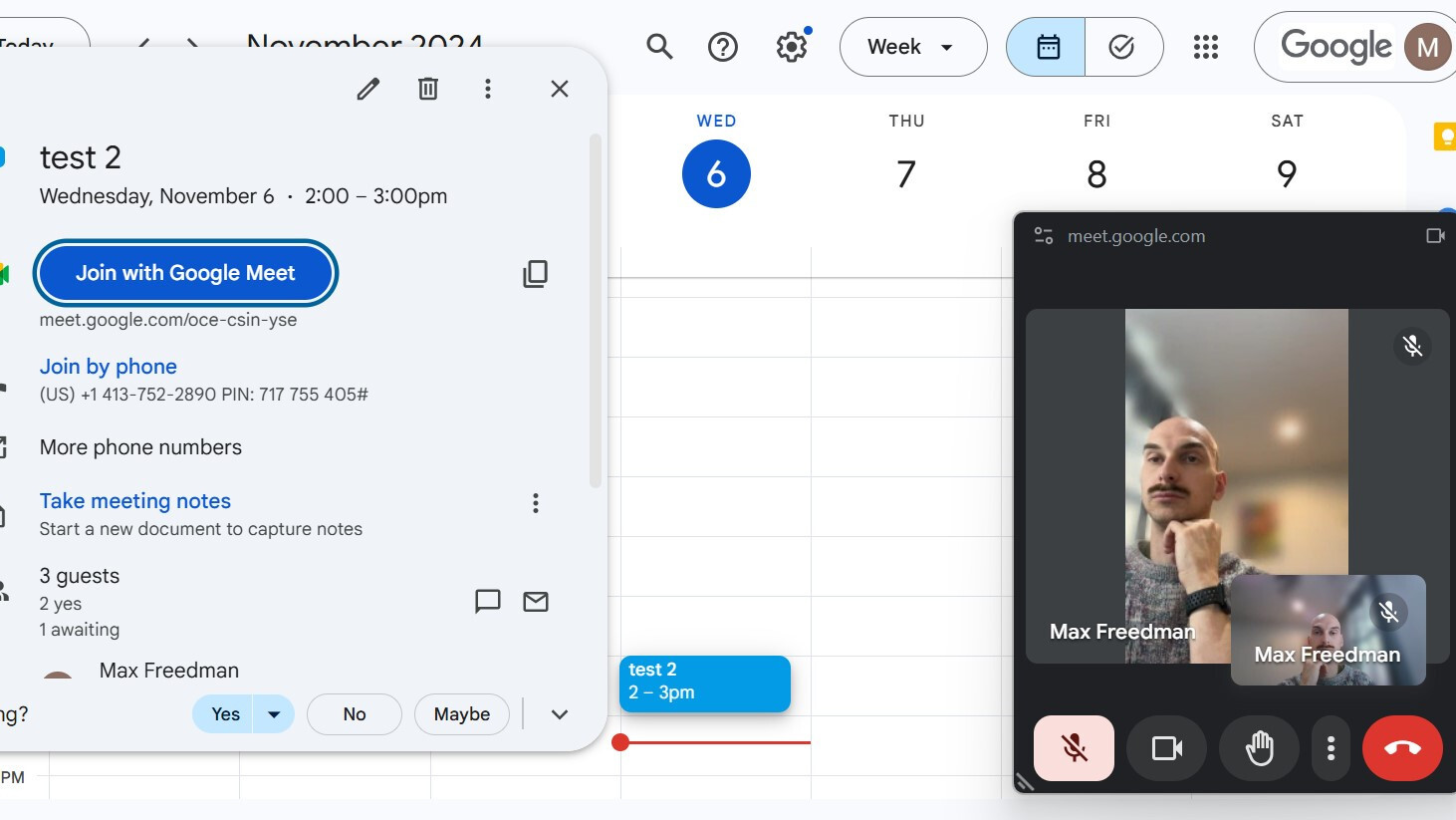
Meet’s closed captioning tool generated mostly accurate captions in nearly real-time. The tool struggled when I spoke quickly or didn't properly enunciate, but that's likely the case with other video conferencing apps. Meanwhile, the software's real-time translation tools for closed captions are highly accurate and effective. It currently supports an impressive 69 languages.
During meetings, it's possible to mute other participants, which is great for filtering any unwanted background noise. You can't unmute other participants once you mute them, however, which is a frustrating limitation. Webex by Cisco doesn't have this restriction. I also found it bizarre that my guests could mute me; that ability should only be available to the meeting facilitator.
Collaboration, Screen Sharing, Webinars, and Chat
It's impressive how many collaboration tools are available during a video meeting—and how easy it is to access them. Inside the Activities icon (the one at the bottom right with a triangle, square, and circle), you get breakout room, live streaming, polling, Q&A, recording, and transcription options. Everyone on my test calls could use the Q&A and polling tools, though only I had access to the other choices.
Each of Meet’s activities is simple to use. With the recording tool, for example, I appreciate that I can simultaneously generate a transcript and stop recording and transcribing simultaneously.
Another option while you are recording and transcribing is to host a webinar. I didn't have any trouble starting one and copying a streaming link for sharing. You can add live captions in English, French, German, Portuguese, or Spanish, and you can click the live stream icon at the top left to see how many people are watching.
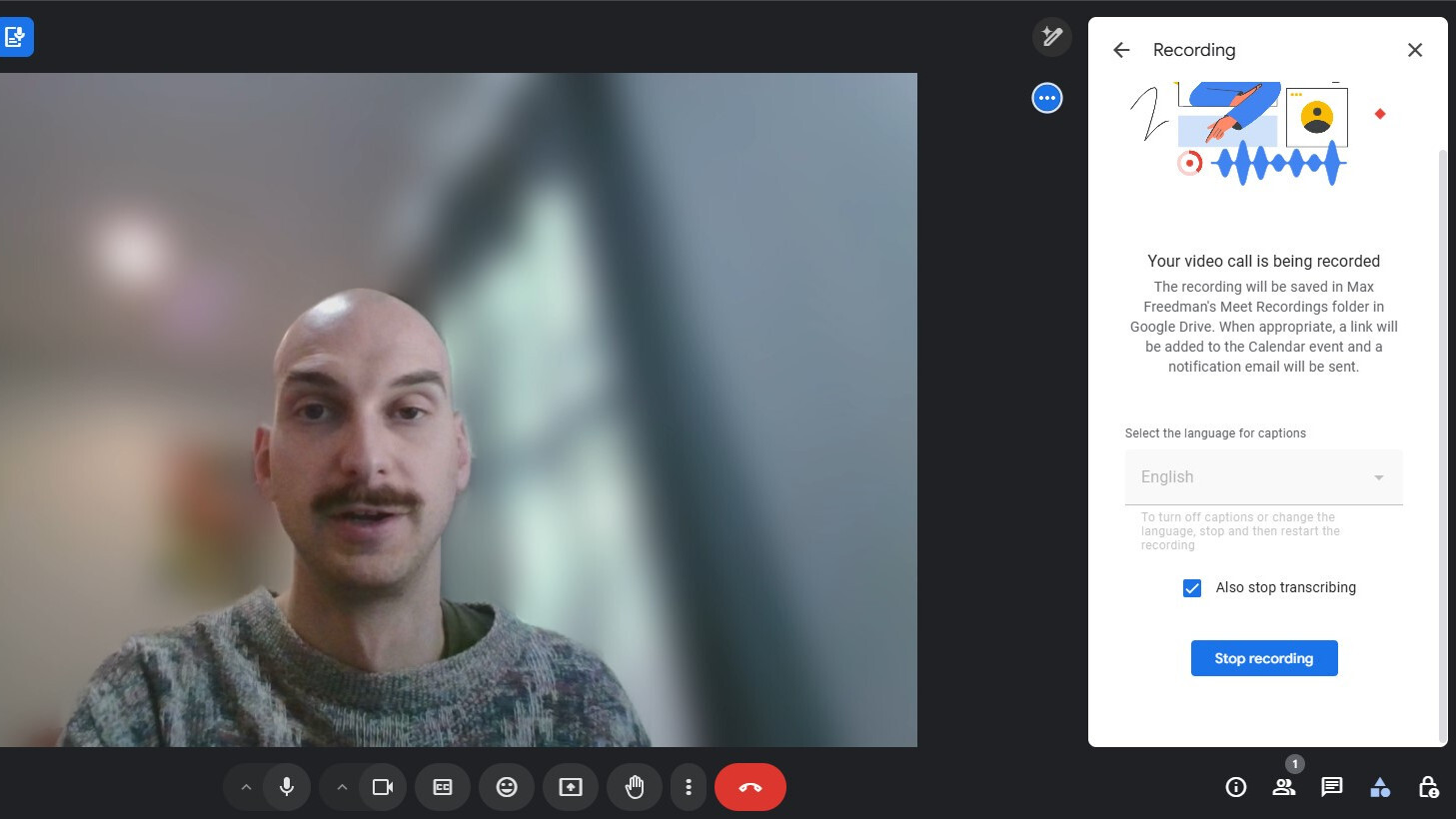
If you don’t need a full word-for-word transcription of your meetings, you can try Gemini’s Take Notes for Me tool. Just click the pencil-like icon at the top right of Meet’s video conferencing client. The notes this tool generates are very much just surface-level summaries. Still, it's nice not to have to write those up yourself and to be able to access the full transcript directly. For comparison, Zoom's AI Companion can create more detailed summaries, answer questions about meetings in progress, and even help you assign action items.
Meet’s screen-sharing tool is very user-friendly for both meeting facilitators and guests. It's simple to share either a tab, window, or full screen; toggling between tabs is very intuitive, too. Meet also offers a ton of annotation options, including emoji, free-draw, and shapes. However, the Jamboard whiteboard feature is going away. For whiteboarding, you need to set up integrations with FigJam, Lucidspark, and Miro. Just keep in mind that all of those offer very limited free tiers. Webex by Cisco is a better option in this regard since it offers unlimited whiteboards with its free tier.
Meet’s chat function is a mixed bag. On the one hand, I like that I can share Google Docs and grant access to other meeting participants directly from the chat. On the other hand, Meet lacks rich text support (something you get with Intermedia AnyMeeting). Unlike Intermedia AnyMeeting, though, Meet’s hand-raising function is outside its chat, which I consider a more logical arrangement.
Customer Support
Assuming you’re the administrator for your business’s Google Workspace account, you can contact Google for support via chat and phone. However, unlike Intermedia AnyMeeting, Google Meet doesn’t offer a way for non-administrative users to get instant support. If your team is having a meeting without you and needs help, they have to call on you to connect with Google’s support staff. This restriction seems unnecessary.
All Google Workspace for Business plans include the company’s Standard support. You can purchase the Enhanced Support add-on to receive support for your most urgent needs within one hour. Anyone can also reach Google’s support crew on X at @AskWorkspace. The company seems to quickly and regularly reply to users who tag it.
If you’re more of the do-it-yourself type, Google offers a near-bottomless pit of online customer support resources for Meet. I used one of its guides to better understand Gemini’s AI background generator. You might also find useful tips in the Google help community, though it seems more focused on questions about administering Google Workspace accounts from my experience.
Additional Features and Security
Beyond the aforementioned Gemini features, Meet offers a watermarking tool for securing and protecting your video conferences. With this feature active, each attendee’s view gets an overlay with their email address and the meeting ID. If someone distributes your video recording without your permission, you’ll know exactly who it was.

Both Microsoft 365 and Outlook users can try Microsoft’s Google Meet add-in to access the platform, though user reviews are dismal. This add-in also theoretically adds another potential surface for cyber attacks, which is interesting given that Meet prides itself on its minimal attack surface. In layman’s terms, there are fewer entry points for threat actors since Meet operates entirely in your browser (on the desktop). This focus, in combination with the platform’s encrypted meeting data and recordings, made me feel safe using the service.
Verdict: A Slick Video Platform With Capable (But Pricey) AI
We like Google Meet's straightforward interface and how anyone with a Gmail account can access the free version. Its advanced AI tools and reliable recording and transcription abilities make it competitive as well. The premium version of Google Meet is just one part of the massive Google Workspace ecosystem of top-notch productivity apps, so it's an obvious choice if your business uses the platform. However, that same aspect means it might not be suitable if you prefer a more standalone approach. Webex by Cisco and Zoom Workplace both offer a somewhat more compelling set of video conferencing capabilities (including native whiteboarding) and flexible pricing, so they remain our Editors' Choice winners.

